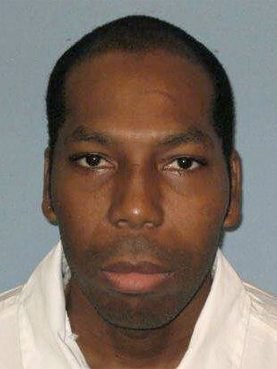Last week, the Supreme Court ruled to block Texas’ planned execution of Patrick Murphy, a Buddhist inmate, because he was not allowed to have his Buddhist chaplain in the execution chamber.
While religious freedom advocates applauded the move, some say the decision also left them perplexed. Just a month earlier, the Supreme Court allowed the execution of Muslim death row inmate Domineque Ray in a similar circumstance.

Domineque Ray. PICTURE: Alabama Department of Corrections via AP.
The American Civil Liberties Union called the decision to halt Murphy’s execution “good news.” But it criticised the court’s earlier ruling in Ray’s case.
“People of all faiths are entitled to religious freedom,” the ACLU said in a series of tweets. “The only real difference … is that Ray is a Muslim and Murphy is not. The Supreme Court’s divergent rulings once again suggest that Muslims are not treated equally.”
Sirine Shebaya, interim legal director at Muslim Advocates, applauded the Murphy decision in a statement. But she, too, wondered why the two cases had produced different outcomes.
“In both cases, a state wrongly tried to ban an inmate’s chosen religious representative while allowing chaplains of other religions to be present,” Shebaya said. “Yet, the outcomes were so different as one plaintiff was a Muslim and the other was not.”
Ray said his religious freedoms were being violated because he was not allowed to have his imam by his side during the execution, though a Christian chaplain would have been allowed.
Shebaya said the decision to allow his execution showed a “double standard” and an “inexplicable indifference to the rights of Muslims”.
In Ray’s case, the court voted 5-4 along partisan lines to allow his execution to proceed. Justice Brett Kavanaugh voted with the majority, saying his decision was because the inmate filed for a review too late.
Ray’s execution date had been set in November, and Ray did not make his appeal until 28th January. But Justice Elena Kagan noted that Ray could not possibly have sought relief any earlier – Ray’s request to have the imam in the execution chamber was only denied on 23rd January. And while Ray filed 10 days before his scheduled execution, Murphy filed two days before his.
Still, in Murphy’s case, Kavanaugh sided with the court’s liberal justices. His brief, concurring opinion highlighted both the appeal’s “sufficiently timely manner” as well as the court’s obligation to prevent “governmental discrimination against religion.”
Where was this belief when the Alabama case went before the Supreme Court?” the Baptist Joint Committee for Religious Liberty wondered in a statement. “Kavanaugh leaves open the possibility that the state will simply disallow all clergy in the execution chamber, which would be a cruel outcome in its own right. But religious preferentialism only compounds the problem.”
In an article for ThinkProgress, Justice for Muslim Collective co-director Maha Hilal argued that Kavanaugh’s reading of the Constitution was “selectively applied”. A black Muslim man like Ray, she said, apparently did not deserve a generous understanding of religious liberty; Murphy, a white Buddhist man, did.
“The issue of ‘process’ and ‘procedure’ used to deny Ray of a spiritual adviser in the death chamber was nothing more than a thinly veiled disguise to the overt anti-blackness and Islamophobia at play,” Hilal argued.
In the past, the Supreme Court has ruled in favor of Muslims seeking relief for religious discrimination. In 2015, the court issued a nearly unanimous ruling in favour of a woman who was denied a job at Abercrombie & Fitch because she wore a hijab. The same year, it unanimously ruled that Arkansas had violated a Muslim inmate’s religious freedom by denying him the right to grow a short beard as part of his religious practice.
In a blog post last week, George Mason University law professor Ilya Somin suggested that the justices had likely heard the public outcry after they lifted the stay on Ray’s execution and sought to rectify their mistake.
The justices “belatedly realised they had made a mistake…that inflicted real damage on their and the Court’s reputations,” Somin wrote on Reason’s Volokh Conspiracy blog. “Presented with a chance to ‘correct’ their error and signal that they will not tolerate religious discrimination in death penalty administration, they were willing to bend over backwards to seize the opportunity, and not let it slip away.”
Georgetown University law professor Marty Lederman, who focuses on constitutional law, and lawyer Deepak Gupta, who has represented several plaintiffs before the court, agreed that public opinion likely had some sway.
“The wholly justified, across-the-board condemnation of the SCOTUS’s indifference to religious discrimination in the execution chamber last month obviously had an impact,” Lederman wrote in a tweet.
“This is how the Supreme Court tries to erase a very recent and obvious moral error without admitting error,” Gupta wrote in another. “Is the Alabama case materially different? They don’t say.”






